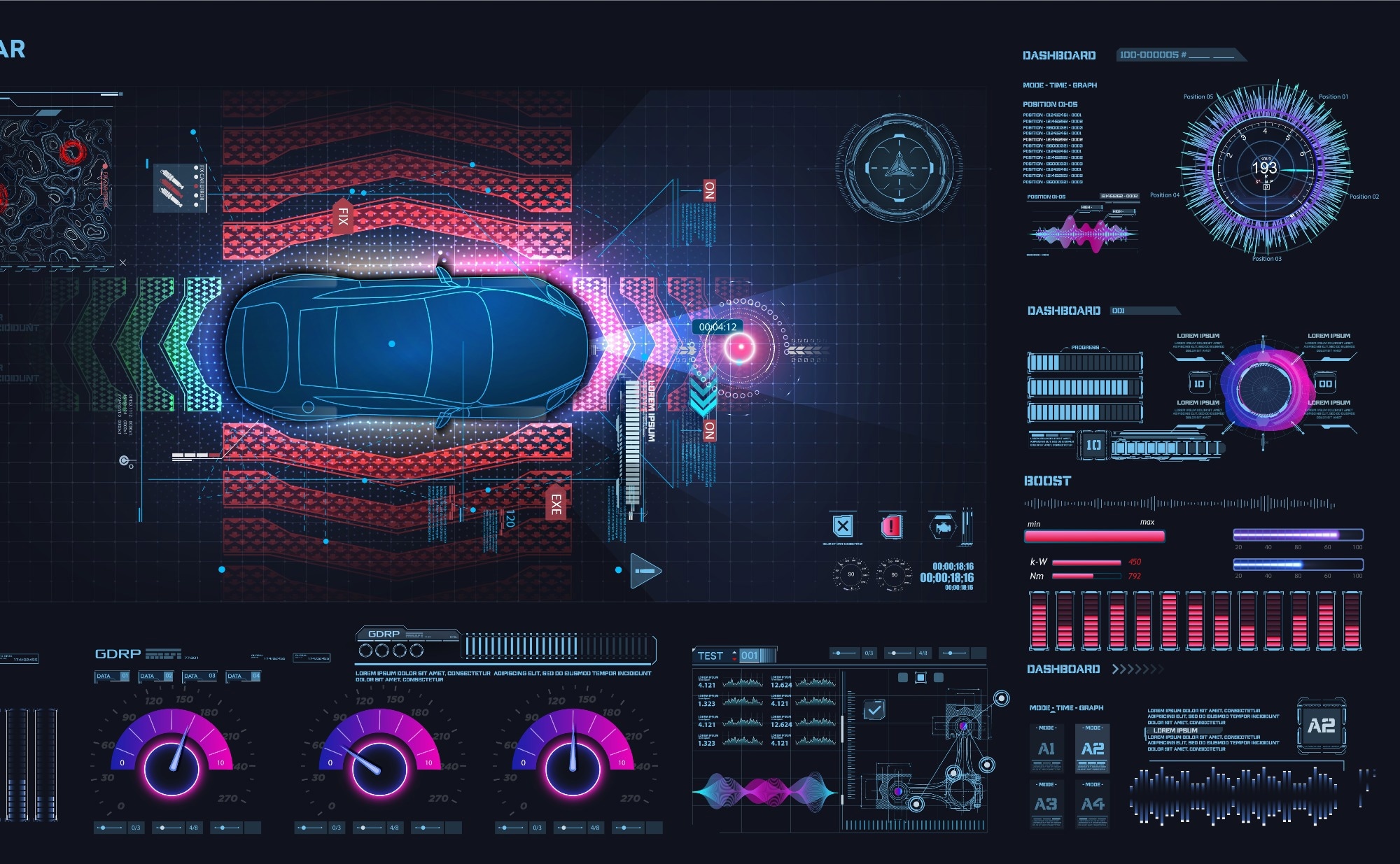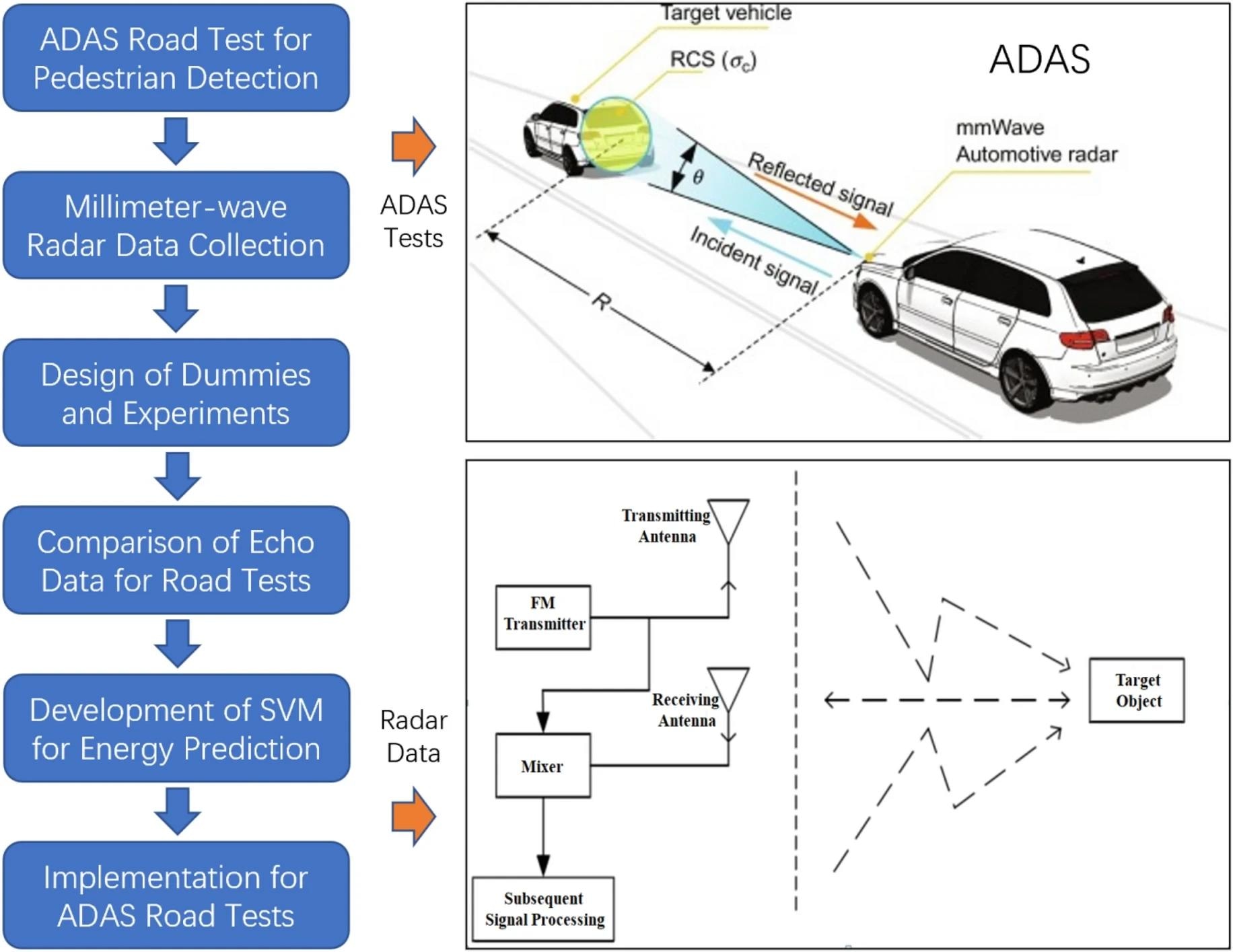In an article published in the journal Scientific Reports, researchers from Tianjin Sino-German University of Applied Sciences, China, proposed an innovative methodology for evaluating the performance of human and dummy models in the road test of advanced driving assistance systems (ADAS) using millimeter-wave radar. Their technique aimed to verify the consistency of the electromagnetic characteristics between humans and dummies in different scenarios and to develop a prediction model for the echo energy of the radar.
 Study: Novel Methodology Using Radar and Dummy Models to Enhance ADAS Road Tests. Image credit: ZinetroN/Shutterstock
Study: Novel Methodology Using Radar and Dummy Models to Enhance ADAS Road Tests. Image credit: ZinetroN/Shutterstock
Background
ADAS is an emerging technology for intelligent and connected vehicles that utilizes diverse environment perception techniques to collect and analyze data about the driver and the surroundings. It aims to provide information and assistance during driving. Moreover, it can improve driving safety, comfort, and efficiency and set the foundation for future autonomous driving techniques. Lane-keeping assistance, adaptive cruise control, and automatic emergency braking are some common features of ADAS.
The field test is one of the key tests that involves testing the ADAS system in a real-world road environment to verify its performance in true driving conditions. However, this testing approach has some drawbacks, such as high cost, time consumption, security risks, and difficulty in reproducing test conditions. Therefore, simulation tests based on a dummy model are becoming a promising way for ADAS road test practice, which can reduce the experiment expenses and avoid potential hazards.
 The radar sensor signal is generated by the frequency generator, and then the frequency synthesizer would combine signals together. The high-frequency signal is amplified and transmitted by power amplifier (PA). The other part is transmitted to the mixer through a directional coupler, waiting for consorting with the received signal. When the transmitted signal which propagates through the air meets the target object in the detection area, the signal is reflected back and caught by the receiving antenna. As the received signal is relatively weak, a low noise amplifier (LNA) is used to enlarge the signal, and the amplified signal is combined with the mixer to get an intermediate-frequency signal to adjust the amplitude and phase of the intermediate-frequency signal. The intermediate-frequency signal is converted into a digital signal after the A/D conversion. The speed, angle and distance of the object can be obtained after processing by DSP and related algorithms. The principle of radar RF is shown in Fig. 219. In Fig. 2,VOC means Voltage-Controlled Oscillator;PA means Power Amplifier;TX means Transmitter; RX means Receiver; LPF means Low-Pass Filter;ATT means Attenuator;SPLTR means Splitter;LNA means Low-Noise Amplifier;VA means Voltage Amplifier;VA MXR means Mixer.
The radar sensor signal is generated by the frequency generator, and then the frequency synthesizer would combine signals together. The high-frequency signal is amplified and transmitted by power amplifier (PA). The other part is transmitted to the mixer through a directional coupler, waiting for consorting with the received signal. When the transmitted signal which propagates through the air meets the target object in the detection area, the signal is reflected back and caught by the receiving antenna. As the received signal is relatively weak, a low noise amplifier (LNA) is used to enlarge the signal, and the amplified signal is combined with the mixer to get an intermediate-frequency signal to adjust the amplitude and phase of the intermediate-frequency signal. The intermediate-frequency signal is converted into a digital signal after the A/D conversion. The speed, angle and distance of the object can be obtained after processing by DSP and related algorithms. The principle of radar RF is shown in Fig. 219. In Fig. 2,VOC means Voltage-Controlled Oscillator;PA means Power Amplifier;TX means Transmitter; RX means Receiver; LPF means Low-Pass Filter;ATT means Attenuator;SPLTR means Splitter;LNA means Low-Noise Amplifier;VA means Voltage Amplifier;VA MXR means Mixer.
About the Research
In the present paper, the authors developed a novel method for assessing the performance of the ADAS road test of an intelligent and connected vehicle that uses dummy models to replace humans. They extracted a novel database from the Doppler effect of the millimeter-wave radar to measure the echo characteristics. The millimeter-wave radar sensor is widely used in the ADAS system to provide high-precision distance and velocity measurements in distinct climate conditions and simplify data processing. This sensor uses the Doppler effect to obtain the radial velocity to distinguish dynamic and static objects.
The researchers performed statistical correlation analysis between humans and several dummy models to verify whether the echo energy of the dummy and humans is highly related to the resonance wave. They then developed and fitted a support vector machine (SVM) model to predict the echo energy. Moreover, they designed two types of dummies with different materials to simulate the human body.
The dummy model consisted of a leg, trunk, coat, main body bracket, and connector. The trunk and legs were filled with microwave-absorbing material and the expanded polyethylene (EPE) material to simulate the human body. The coat used Oxford fabric to simulate the real clothing material. The main bracket and the supporting platform were made of PC and steel materials, respectively, to reduce the influence of the electromagnetic wave echo. The dummy with microwave-absorbing material was named Type 1 dummy, and the dummy with expanded polyethylene was denoted as Type 2 dummy.
The experiment used a 77 GHz millimeter-wave radar to collect the electromagnetic wave echo characteristics of humans, Type 1 dummies, and Type 2 dummies at fixed distances and different angle positions according to the Doppler effect. The radar range-Doppler map was obtained using the signal processing method. Moreover, the statistical characteristics of humans and dummies were assessed to compare their electromagnetic characteristics.
Research Findings
The outcomes showed that humans and dummies have effective echo characteristics as the imaging is clear on the Doppler picture. The echo energies of the dummy and the human differed at distinct angles induced by the change in radar cross section (RCS) between the dummy and the human. The correlation coefficients between the humans and the two types of dummies ranged from 0.75 to 0.93, which indicated a linear correlation among the two variables. This means that the dummy could simulate human scenes effectively.
The SVM model was designed to take experimental factors, such as the type of virtual person and the angle as input and to produce echo energy as output. It was evaluated using the performance metrics root-mean-square error (RMSE) and mean absolute error (MAE). The results indicated that for the training data, the RMSE values were 0.43, 0.45, and 0.52, while the corresponding MAE values were 5.42, 5.74, and 6.55, respectively. In the case of the testing set, the RMSE values were 0.79, 0.80, and 0.90, with respective MAE values of 9.99, 10.12, and 11.42.
Conclusion
In summary, the novel technology proves effective and efficient for assessing the performance of human and dummy models for ADAS tests. The research verified the consistency of the electromagnetic characteristics between humans and dummies and developed a prediction model for the echo energy of the radar based on machine learning. The researchers highlighted that the dummy can simulate human scenes, and the SVM model can predict the echo energy with reasonable accuracy.
The authors acknowledged limitations and challenges, including the limited number of human and dummy samples, the influence of different material properties, and the complexity of real-world conditions. They suggested that future work should increase the number and variety of human and dummy samples and environmental scenes to conduct more in-depth and comprehensive studies, apply complex and powerful machine learning algorithms, such as deep learning, and develop more realistic and robust dummy models that can better simulate the human body and its interactions with electromagnetic waves.